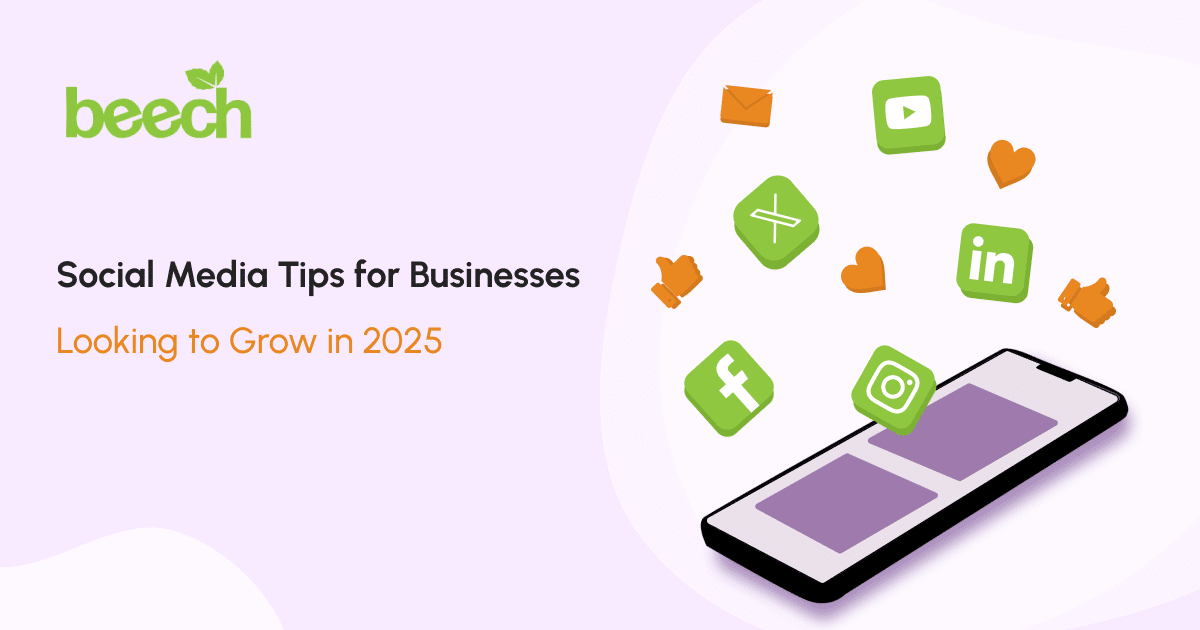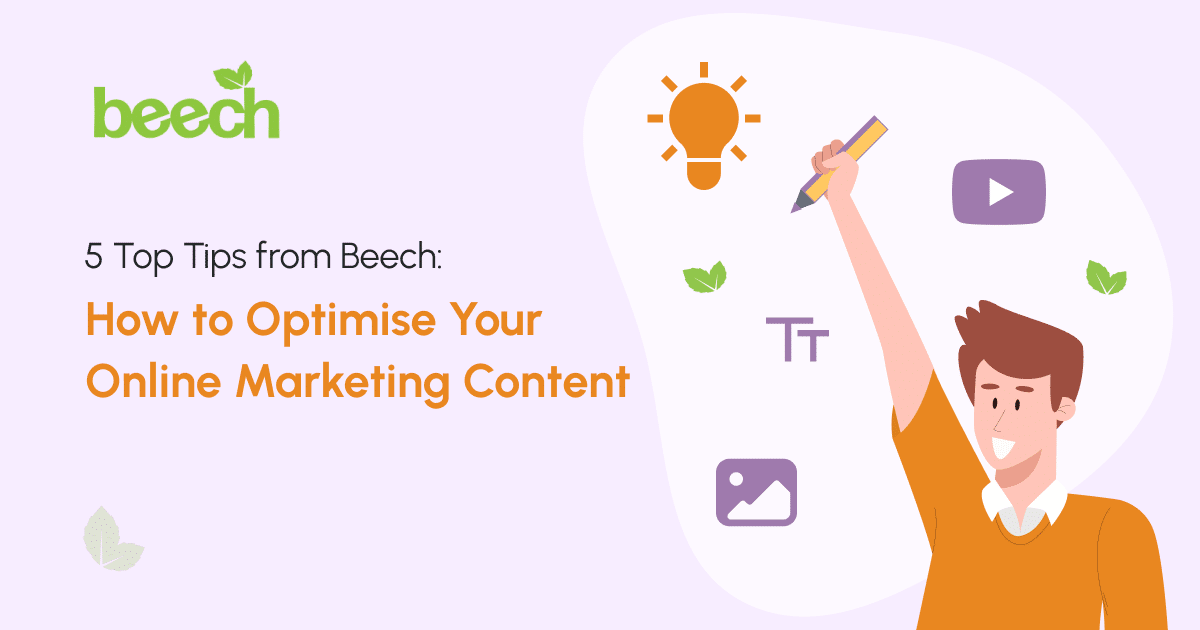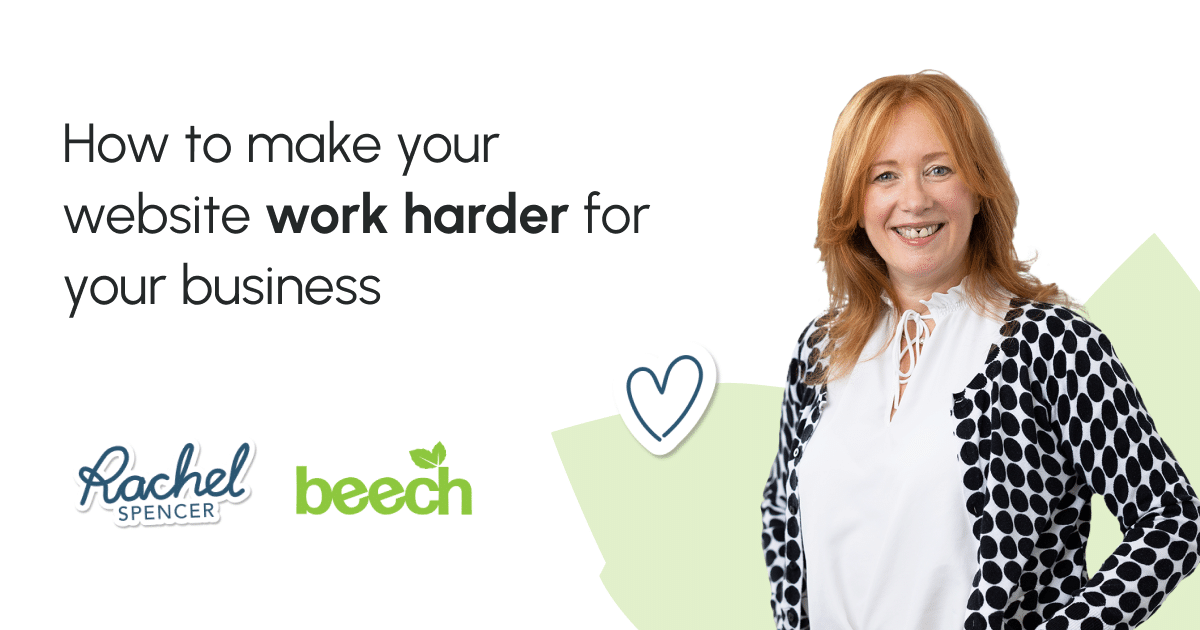Here’s what’s covered in our latest blog on social media:
- Brand visibility: How social media extends online reach and builds customer credibility
- Platform selection: Choosing the right channels to maximise time and marketing budget, with a clear guide on the various social media platforms available to businesses and how to use them
- Content optimisation: Creating effective content tailored to different social media platforms
According to Sprout Social, approximately 90% of consumers use social media to keep up with trends and cultural changes, and 91% of businesses use social media data to understand their customers better.
Having a strong social media presence is now a must for every business, no matter the size. With over 4.9 billion social media users worldwide in 2024 (nearly 60% of the global population), there are huge opportunities to reach new customers.
Social media is a key tool for any organisation, particularly small businesses, looking to expand its reach to a larger audience and learn more about the customers who interact with it online.
This blog will explain why social media is a great lead-generation tool for businesses and provide practical tips for businesses wanting to make the most of the various platforms and tools available.
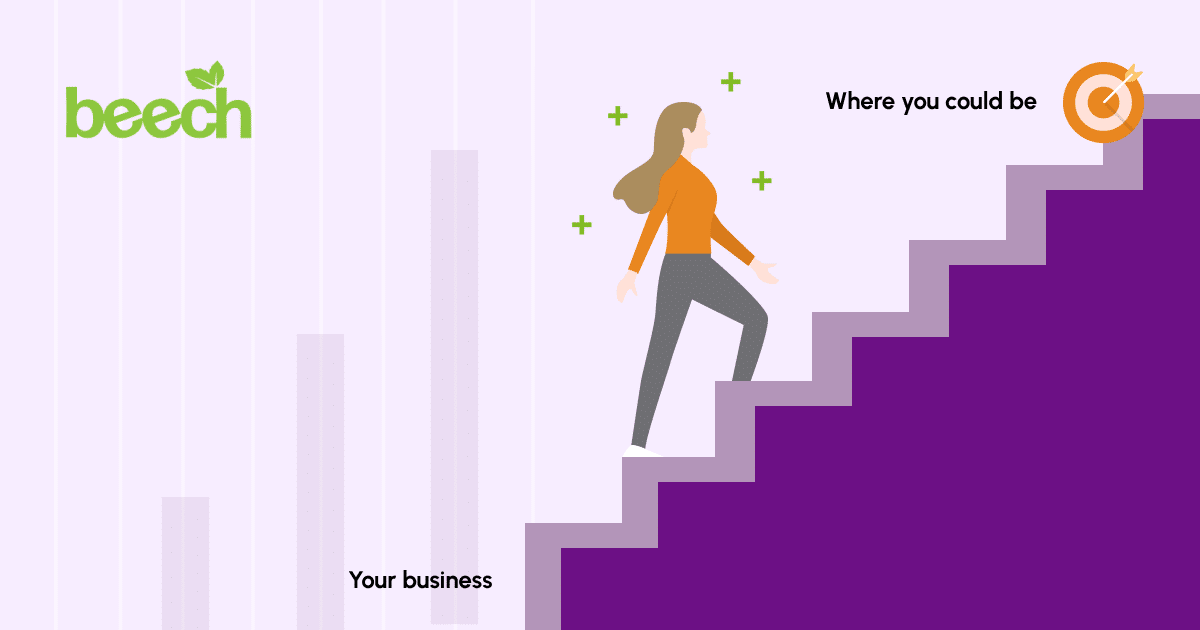
Why social media benefits businesses
Unlike local advertising that only reaches nearby customers, social media supports connections with potential customers anywhere, anytime.
Building brand awareness is a process that takes time and requires many different tools to be successful, social media being one of the most popular. As we’ve spoken about in a previous blog about consumer biases, sometimes, the most important thing a business can do is just be there.
What does this mean?
Social media gives access to large, worldwide networks of users. By developing effective content, businesses can reach these users, and online communications can be the first step towards developing a relationship with those in our target audience.
The benefits of social media for businesses include:
- Direct connections with ideal customers.
- Unlike websites, social media content can speak directly to potential customers on a 1-1 basis by appearing on their timeline or feed. This allows organisations to talk to people, building trust by showing the ‘person behind the curtain’.
- Showcasing credibility and authority in the industry.
- A professional website creates the foundation of an online presence, but social media amplifies credibility. A recent Sprout Social study found that 68% of consumers find new products and brands on social media—up 12% since 2020. This means that building trust via social media is essential and could result in more conversions.
- Standing out from the competition.
- Social media can benefit a small business by establishing it as a thought leader with content that engages and persuades users to interact with it. When a small business stays active on social media, it’s like keeping their shop doors open 24/7.
- Cost-effective marketing across multiple platforms.
- Social media offers significant ROI with the potential of free organic reach and affordable paid options. Content can be adapted across channels, targeting platform-specific audiences starting with minimal budgets.

How to choose the right social media platforms
Choosing the right platforms isn’t about being everywhere—it’s about being where the target audience is. Many small businesses make the mistake of trying to be on every social media platform at once. This usually spreads time and effort too thin, leading to irregular posting and poor results everywhere.
Research by Hootsuite found that businesses using just 2-3 social platforms were 71% happier with their results compared to those trying to manage 5+ platforms.
So, before committing resources and marketing, invest time in understanding the differences between these platforms to develop meaningful connections, not just digital noise.

Platform Selection Guide
When selecting social media platforms, consider both audience demographics and business objectives:
LinkedIn is the ideal social media platform to build B2B relationships.
According to Statista, the number of LinkedIn users has increased regularly since 2023, with a growth of 13.3% in the UK. With over 930 million members and 69% of users in decision-making positions, creating insights and active participation in industry conversations help showcase brands as trusted authorities worth following on this platform. It’s a must for businesses who sell to other businesses.
Instagram thrives on visual storytelling.
This platform provides the canvas for businesses with visually appealing offerings to create immersive brand experiences that resonate emotionally. With over 2 billion monthly active users, it excels at driving brand awareness and product discovery. It’s also a great social media platform to target younger audiences, as Sprout Social reported that “Instagram has overtaken YouTube and Facebook to become the second-most-visited smartphone app among 18-34-year-olds.”
Facebook remains the largest social network.
Despite changing demographics, Facebook remains the largest social network with 2.9 billion monthly active users, meaning it’s still very impactful for many businesses. Its sophisticated ad targeting capabilities make it valuable for many businesses. With carefully considered and managed approaches to Facebook Groups and strategic ad campaigns, businesses can nurture genuine connections with the right people, aligning with business objectives and values.
X (formerly Twitter) is the place on social media for customer service.
Best for real-time customer service, industry news, and topical conversations. With 450 million monthly active users, it’s particularly effective for businesses looking to join broader conversations in their industry.
TikTok is essential for attracting younger audiences through video.
This is one of the newer developments in social media marketing, and it has proven to greatly impact customer journeys. Its algorithm prioritises the user experience and shows them what they’re interacting with most. To succeed on TikTok, brands should consider well-crafted messaging and specific content that hits the topics and conversations that interest their target audience most.
The 'right' social media platforms
These are just some of the platforms available to businesses, and rather than stretching resources across all of them, focus on mastering the ones that most resonate and align with the business, and their target demographic.
A digital marketing strategy should prioritise platforms where a specific target audience is most active rather than spreading resources too thin.
As a starting point, ask: Where does the audience already engage? Are enough people seeing content on Facebook, compared to LinkedIn?
For small businesses with limited time and money for marketing, focusing on fewer platforms makes much more sense. By concentrating on just 2-3 platforms, businesses can:
- Develop deeper platform expertise
- Create more tailored, high-quality content
- Build stronger communities
- Allocate sufficient time for meaningful engagement
- Measure and optimise performance more effectively
Only when there is clarity on the platforms that should be taken advantage of, should content creation begin to target these audiences, wherever they come from!

Content creation best practices for social media platforms
Now that the right platforms have been identified, let’s focus on creating content that drives meaningful engagement. Here’s our top tips:
Visual appeal is crucial
According to HubSpot, “in 2021, over 50% of marketers used visuals in over 91% of their content.”.
Why? Because it’s effective!
Use high-quality, on-brand imagery and create short videos that deliver value immediately to social media users and grab their attention on saturated timelines and feeds. Remember to include branding, to ensure content is instantly recognisable, and create a mixture of images, infographics and videos to maintain interest throughout a profile.
With any imagery, it’s also important to understand sizing, and how it’ll appear on various platforms and channels. Read this blog post on optimising content to find out more about this.
Engaging captions and ‘hooks’ means more people read
Having a strong caption can turn passive viewers into active users engaging with content. Give the audience key information and value in every post, use keywords in the industry, and include clear calls-to-action to encourage communication with ideal customers on social media.
For text content and captions, having a distinct voice also adds to brand visibility on social media, and helps the audience get to know the business better. Use a consistent brand voice, ask questions to encourage comments, and add relevant hashtags strategically (we’d recommend between 3 to 5).
Also, remember to adjust caption length based on platform, understanding that the audiences of these platforms are often quite different and may not want to read the same post.
Platform-Specific Optimisation
Each social media platform works differently, with its own rules about what content gets shown to users. What works great on one platform might not work at all on another.
Here’s how to optimise content for today’s major platforms:
LinkedIn:
- Best content: Industry insights, professional achievements, company news
- Ideal posting: 2-5 times per week
- Optimal length: Articles 1,500-2,000 words; posts 150-250 words
- Key metrics to track: Engagement rate, profile views, lead generation
Instagram:
- Best content: High-quality images, carousel posts, Reels, Instagram Stories
- Ideal posting: 2-3 times per week
- Recommended hashtags: 3-5 relevant, specific hashtags
- Key metrics to track: Content interactions, profile visits, reach or views
Facebook:
- Best content: Video content, images, community discussions and user-generated content
- Ideal posting: 3-5 times per week
- Optimal video length: 2-5 minutes
- Key metrics to track: Content interactions, profile visits, reach or views.
X (Formerly Twitter):
- Best content: Sharing industry news, helpful tips, engaging visuals and customer testimonials
- Ideal posting: 3-5 times per week
- Optimal length: between 70 and 100 characters
- Key metrics to track: Engagements, profile visits, post views
TikTok:
- Best content: Interacting with trends, educational clips, behind the scenes or tutorials to entertain viewers
- Ideal posting: 3-5 times per week
- Optimal length: between 15 and 60-second videos (though longer, more valuable content has performed well)
- Key metrics to track: Video views, engagement rate, average watch time
Use data analysis to find out what’s working
Social media platforms offer built-in analytics tools that provide valuable insights into content performance. While follower counts and likes are nice to see, what really matters is how social media helps a business grow. Track engagement metrics that suggest meaningful interaction from the audience, such as:
- Comments
- Shares and Reposts
- Saves
These suggest a more valuable choice from social media users, as they’ve taken additional steps to leave a comment, share a post to their feeds or saving the post for future reference.
Use analytics to find patterns in top-performing posts and compare content performance across different platforms. From this, set clear KPIs for each campaign based on specific goals, to achieve brand awareness, website traffic, or conversions.
Remember that social media algorithms change regularly, and keeping up with every change could be unrealistic, so monitoring notable changes allows for quick adaptation and creation of content that’s effective and relevant.
Here are some tools we recommend for effective social media content creation:
- Video editing: CapCut
- Keyword research: SEMrush Keyword Magic Tool and AnswerThePublic
- AI Text Generation: Claude
- Trend research: Google Trends
- A tool for everything: Adobe Creative Cloud
In Summary
Social media is a vast, open space on the internet full of different individuals and organisations, all of which look at these platforms for different reasons.
Using these social media tips for businesses isn’t about following every trend or just getting more followers—it’s about setting up simple systems that consistently help businesses grow.
The most successful small businesses treat social media as an important part of their overall marketing plan, not just a separate activity. They focus on choosing the right platforms, creating good content regularly, building relationships with customers, and measuring what actually matters to their business.
Remember that social media success takes time. The businesses getting the best results are those that stick with it, keep learning what works, and make improvements based on their results.
And those who ask for help if they need it!
In our last blog post, we reminded readers of the importance of choosing a digital marketing partner that can actually do the work, should a business want to outsource these tasks.
We can help with social media marketing, with varying levels of support to help businesses thrive. Get in touch with us today for more information and we’ll be happy to help.
Watch the highlights on YouTube
Click here to watch on YouTube.
